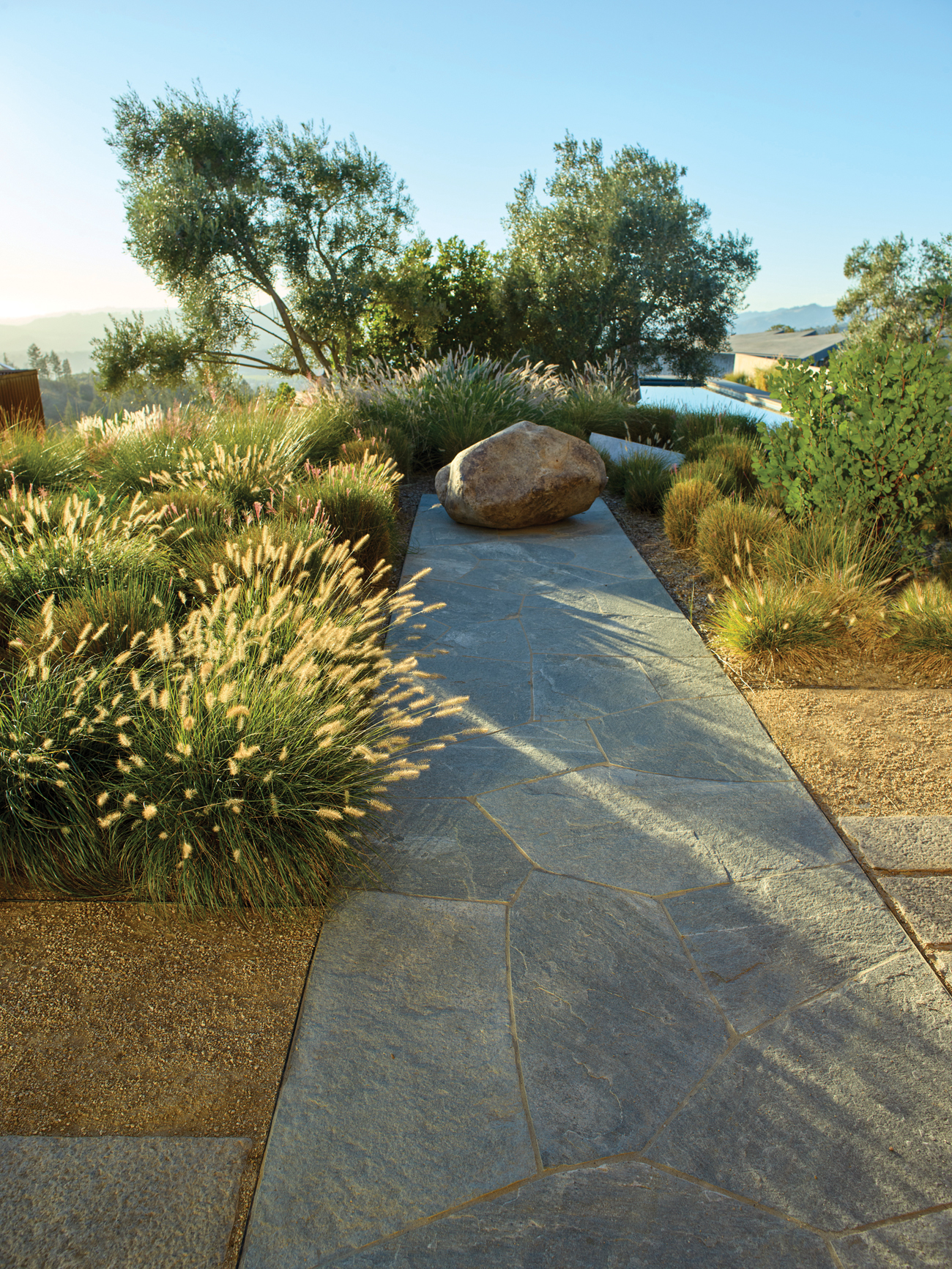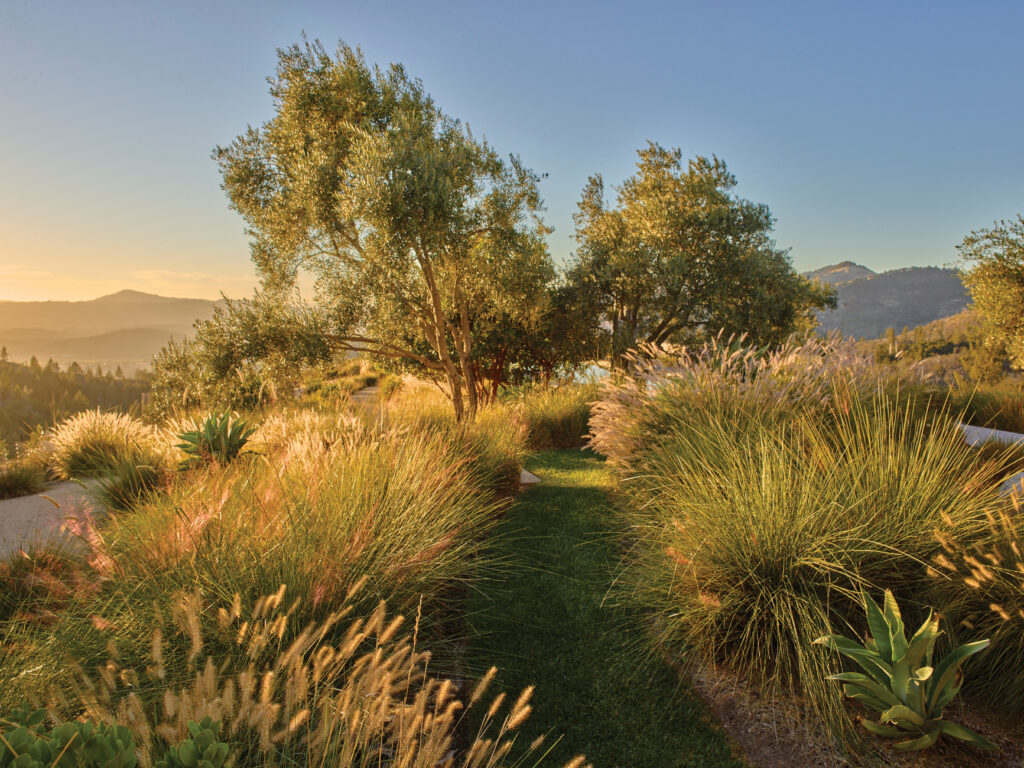
Lessons in Fire-Safe Landscaping from a Garden Destroyed by Wildfires
San Francisco-based landscape design stalwart SurfaceDesign resuscitated a modern garden that was nearly destroyed by a wildfire.

After a wildfire wiped out much of the protective madrones in the forest below this stunning Mork Ulnes–designed property—and charred much of the garden and main residence—Surfacedesign came in to assess the damage and replant. “The pool area mostly survived the fire, since the concrete walls acted as a firebreak,” says principal Michal Kapitulnik. The landscaping is comprised of a mix of grasses, pink muhly grass, and deer grass, which capture light and move with the wind. They’re accented with more structural agave groupings. Because many of the larger trees and shrubs surrounding the home were lost, creating a sound and wind barrier was a priority.

Marion Brenner
“Salvaged olive trees and newly added Arbutus x ‘Marina’ [strawberry trees] provided shade and scale to the newly exposed hillside post-fire,” Kapitulnik says. Along the driveway entrance, invasive acacias were taking over. “After we eradicated the invasives, we established a palette of native shrubs including manzanitas and ‘Davis Gold’ toyon with oak trees,” she adds. Erosion control was also a big concern with the newly exposed hillside. The Surfacedesign team took cues from native flowers and grasses to secure it. “We hydroseeded the hillside that had burned with a custom mix of California barley, purple needlegrass, nodding needlegrass, California melic, pine bluegrass, and Lupinus nanus,” Kapitulnik explains.

Marion Brenner
To help retain moisture in the soil around the new plantings, they used gravel mulch instead of bark and plant materials. It’s noncombustible and won’t blow away in a gust. Two years after the work was finished, only traces of fire scars remained. “Even the madrones are coming back,” she says. “It’s a very resilient place.”
Fireproofing Tips for Landscape Design
1. Say Goodbye to Invasives
Remove as many invasive species from the landscape as possible. They’ll be the first to grow back and can be serious fire-spreaders.
2. Plant Strategically
Plant native wildflower and grass seeds to stabilize a hillside left barren by flames, or in a large meadow, to keep invasive species at bay.

Marion Brenner
3. Choose Gravel Mulch
Install gravel mulch instead of traditional bark—it’s noncombustible, keeps moisture in the soil, and doesn’t blow around.
4. Replant
Be aggressive about replanting native trees like toyon and live oaks, which can keep nonnatives away and create a wind-screen in a landscape that’s been decimated by fire.
